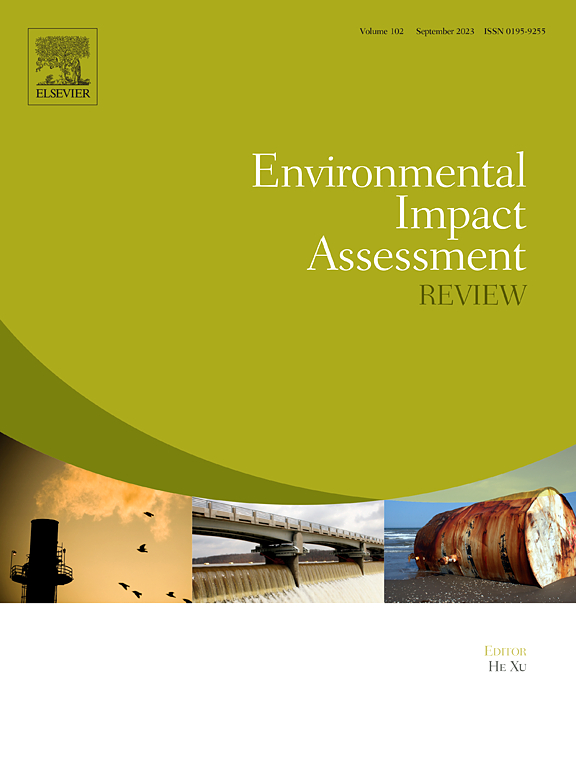轻量化和电池技术对电动汽车可持续性的影响:综合生命周期评估
IF 9.8
1区 社会学
Q1 ENVIRONMENTAL STUDIES
引用次数: 0
摘要
我们利用详细的拆解数据对两款电池电动汽车(BEV)的温室气体(GHG)排放进行了全面分析,并与四款内燃机汽车(ICEV)的温室气体排放进行了对比。我们利用拆解数据计算了生产和回收阶段的温室气体排放量,并建立了车辆动力学模型,估算了使用阶段的温室气体排放量。在验证模型并建立基线后,我们分析了新趋势对其净碳足迹的影响。具体而言,我们考虑了轻量化、电池技术和充电技术,并展示了长程 BEV 与作为内燃机车绿色替代品的可持续性之间的权衡。温室气体的计算基于生命周期评估,包括车辆的生产、使用和处置/回收寿命。生产阶段的温室气体是通过详细的车辆拆解数据计算得出的,而不是对车辆材料成分的一般假设。同样,使用阶段的温室气体也是通过首先创建精确的车辆动态模型,并根据车辆测试数据进行验证来估算的。然后,我们分析了充电类型和电力来源对这些技术可持续性的影响。这些研究表明,美国的平均(混合)电力来源约占温室气体排放的 50%,而将充电方式从家庭充电改为电站充电或超级充电可减少约 8% 的温室气体排放。接下来,我们研究了电池技术和轻量化对电动汽车净温室气体排放的影响。原始设备制造商利用这两种方法减轻汽车重量,并改善其在使用阶段(驾驶)的电力消耗。我们的研究表明,虽然 NMC 和 NCA 等电池技术的高能量密度对减轻车重和增加续航里程很有吸引力,但稀有材料的使用却大大增加了生产过程中的温室气体排放。同样,我们的研究表明,以铝合金替代钢材(如千兆铸造)的轻量化技术会增加更多的生产温室气体排放,从而大大抵消了汽车寿命期内节省的电能消耗。因此,本研究提出了电动汽车设计和使用中的三个关键考虑因素:电池材料选择、汽车轻量化的权衡分析以及采用高效充电方法和能源,所有这些都旨在减少其在全球的总体碳足迹。本文章由计算机程序翻译,如有差异,请以英文原文为准。
The impact of lightweighting and battery technologies on the sustainability of electric vehicles: A comprehensive life cycle assessment
We present a comprehensive analysis of the greenhouse gas (GHG) emissions of two battery electric vehicles (BEVs) using detailed teardown data and contrast them with those of four internal combustion engine vehicles (ICEVs). We used the teardown data to calculate the production and recycling phases as well as for the vehicle dynamics modeling and estimating the utilization phase GHGs. After validating the models and establishing a baseline, we analyzed the effect of new trends on their net carbon footprint. Specifically, we considered lightweighting, battery technology, and charging technologies and showed the tradeoff between longer-range BEVs and their sustainability as a green alternative to ICEVs. The GHGs were calculated based on a life cycle assessment, including the vehicles' production, utilization, and disposal/recycling life. The GHGs of the production phase were calculated using detailed vehicle teardown data rather than general assumptions about the vehicles' material composition. Similarly, the utilization phase GHGs were estimated by first creating accurate dynamic models of the vehicles and validating them against vehicle test data. Then, we analyzed the effect of charging type and electricity source on the sustainability of these technologies. These studies showed that the average (mixed) US electricity source accounts for about 50 % of GHGs, and changing charging from household to station or supercharging can save about 8 % of GHG emissions. Next, we studied the effect of battery technology and lightweighting on EVs' net GHGs. OEMs have exploited both of these options to reduce the car's weight and improve its electrical consumption during the utilization phase (driving). Our study showed that while the higher energy density of battery technologies like NMC and NCAs is attractive for reducing the vehicle's weight and increasing its range, the use of rare materials significantly increases GHG emissions during production. Similarly, we showed that lightweighting by substituting steel with aluminum alloys (such as giga-casting) adds more production GHGs that significantly offset the savings in electrical consumption achieved during the vehicle's lifetime. Therefore, this study proposes three pivotal considerations in the design and utilization of electric vehicles: battery material selection, trade-off analysis for vehicle lightweighting, and adoption of efficient charging methods and energy sources, all of which aim to reduce their overall global carbon footprint.
求助全文
通过发布文献求助,成功后即可免费获取论文全文。
去求助
来源期刊

Environmental Impact Assessment Review
ENVIRONMENTAL STUDIES-
CiteScore
12.60
自引率
10.10%
发文量
200
审稿时长
33 days
期刊介绍:
Environmental Impact Assessment Review is an interdisciplinary journal that serves a global audience of practitioners, policymakers, and academics involved in assessing the environmental impact of policies, projects, processes, and products. The journal focuses on innovative theory and practice in environmental impact assessment (EIA). Papers are expected to present innovative ideas, be topical, and coherent. The journal emphasizes concepts, methods, techniques, approaches, and systems related to EIA theory and practice.
 求助内容:
求助内容: 应助结果提醒方式:
应助结果提醒方式:


